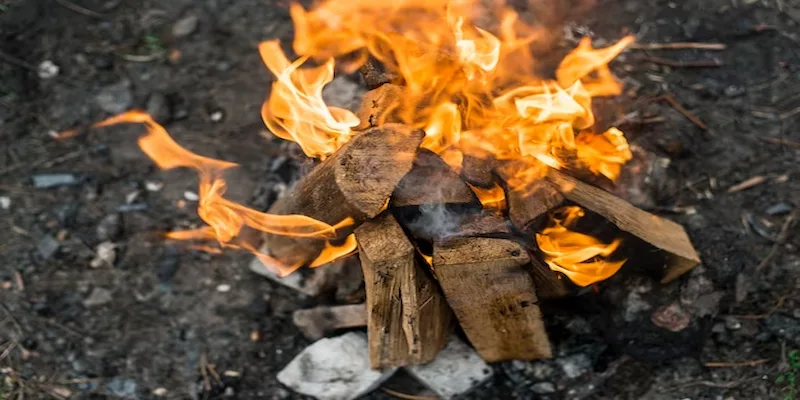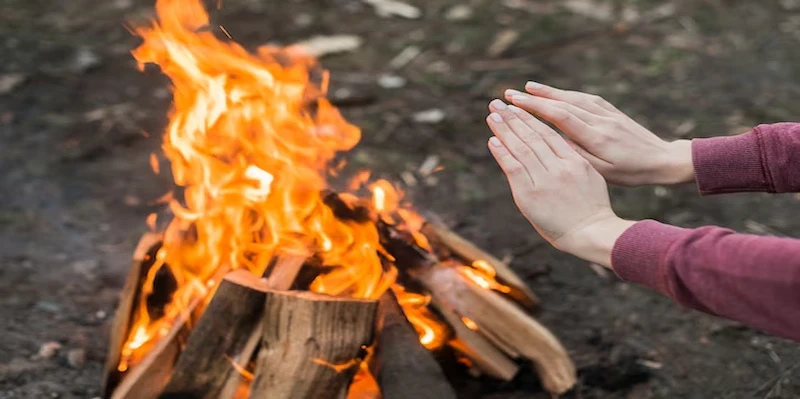Simple and Effective 4 Fire Starters for Your Log Cabin: A Comprehensive Guide
Updated: 29 Jan 2024
299
Having a roster of reliable fire starters at log cabin is essential, ensuring you can enjoy the warmth of a fire with ease and efficiency. Fire Starters for Your Log Cabin have the main role. There’s nothing like a bright, roaring fireplace to enhance the atmosphere of your rustic getaway. Whether you want to light a roaring fire in your fireplace or plan an outdoor fire under the stars, having a reliable fire starter is essential if you are to ensure an experience hassle-free and fun. In this article, we explore four tried and tested fire starters that are perfect for lighting up your log cabin adventure.
From traditional techniques to modern conveniences, we have you covered with options that will keep you entertained at campfire events. Let’s dive in and find the perfect fire starter solution to complement your cabin retreat. This guide will walk you through different fire starters, emphasizing convenience and sustainability. Safety tips underscore each method to keep your fire-starting experience safe and enjoyable.
1. Natural Fire Starters
Dry Pine Cones
- Gathering and Preparing Pine Cones
Pine cones work best when they’re dehydrated. To prepare them, collect pine cones during dry weather and let them sit out in the sun for a few days to eliminate any moisture.

- Using Pine Cones with Kindling
Once dry, place a few pine cones inside your fire pit or fireplace, surrounded by kindling. Use a match or lighter to ignite the cones until the kindling catches fire.
- Tips for Successful Pine Cone Fire Starting
Quality over Quantity: Use a few larger pine cones rather than several small ones for a better result.
Airflow: Ensure good airflow to allow the fire to build. Leave spaces between the cones and kindling
Be Patient: Depending on the size of the cones and kindling, it may take a little best time of camping for the fire to become well-established.
Birch Bark
- Characteristics and Preparation of Birch Bark
Birch bark is highly flammable due to its flammable oil content. When gathering, look for dry, peeling bark from mature birch trees, especially after a storm.
- Harvesting and Storing Birch Bark
Peel the birch bark into thin, uniform sheets and store it in a dry place. Roll the sheets loosely, rather than folding them, to prevent cracking.
- Utilizing Birch Bark for Fire-Starting
a) Spread the birch bark out flat near the kindling
b) Use fire steel, matches, or a lighter to ignite the individual layers of the bark, producing a short but intense flame.
c) Slowly add kindling as the bark burns to build a sustainable fire.
Fatwood
Properties and Benefits of Fatwood
Also known as lighter wood, fatwood is resin-rich pine wood that ignites easily and burns fiercely. It can be found in the stumps of pine trees.
Locating and Harvesting Fatwood
- Look for pine stumps or dead-standing pine trees with hard, amber-colored resin at the center. This resin-soaked wood is your fatwood.
- Use an axe to chop off the fatwood into manageable pieces.
Igniting Fatwood
- Place a piece of fatwood within your fire pit or fireplace and surround it with kindling.
- Use a match or lighter to set the fatwood alight, and watch as it burns steadily, igniting the kindling with ease.

Dried Leaves and Twigs
Identifying Suitable Leaves and Twigs
Choose dry, brittle leaves and small twigs that break easily. Oak and hickory leaves can be especially effective due to their high cellulose content, which burns easily.
Gathering and Storing
- Periodically collect dry leaves and twigs in a dedicated basket or container near the fireplace.
- Keep the collection dry and away from the elements to ensure it’s always ready for use.
Techniques for Utilizing Leaves and Twigs
- Arrange a small pile of the leaves and twigs as a base layer for your kindling.
- Light the leaves with a match or lighter, and once they’re burning, slowly add the kindling to build the fire.
2. Wax-Based Fire Starters
Using household items like cardboard egg cartons or paper cups, combine candle wax with sawdust or dryer lint to create long-burning fire starters.
- Melt candle wax using a double boiler, and mix in the sawdust or lint until saturated.
- Pour the wax into the egg carton or cups with the sawdust/ lint, and let them cool. Then, cut the cartons or cups into individual starters.
- Place a wax starter under your kindling, and light the edge. The wax will provide a slow, consistent burn to ignite the kindling.
Quotation
“Fire is the most tolerable third party.”
By: Famous naturalist, John Muir
3. Sawdust Fire Starters
Craft sawdust into small pucks using a mold or by compressing it with wax or another binding agent.
- Mix sawdust with wax, and press the mixture into a small puck-shaped mold. Allow the pucks to set and harden.
- Place a sawdust puck amidst kindling and light. The wax will allow for a prolonged burn, quickly igniting the surrounding material.
4. Pine Cone Starters
Enhance pine cones with a coat of loosely packed dried herbs, which not only aid in the ignition but also add pleasant scents to your fire.
- Roll the pine cones in non-toxic dried herbs such as lavender, rosemary, or sage.
- Place the pine cone fire starters with kindling, and light the herbs. The herbs will help the pine cones catch fire, and the wax will sustain it long enough to ignite the kindling.
Always remember to have a fire extinguisher or water source readily available when working with any fire-starting method. Additionally, use all-natural ingredients and avoid treated lumber or chemicals for the purest fire-starting experience. Enjoy the warmth and the primal comfort of your fire in your log cabin safely and responsibly. Keep this guide handy for all your future fire-starting needs.
Pros and Cons of Different Fire Starters for Your Log Cabin
The pros and cons of different fire starters are stated below.
| Fire Starters | Pros | Cons |
| Pine Cone | Natural, free if you have pine trees nearby, easy to use | May take a while to catch fire, size of cones can vary |
| Birch Bark | Highly flammable, burns with intense flame, easy to gather and store | Limited availability, some bark may be damp |
| Fatwood | Ignites easily, burns fiercely, found naturally in pine stumps | Requires an axe to harvest, can be difficult to locate |
| Dried Leaves and Twigs | Abundant, free, and easy to collect | Can be affected by moisture, and may not burn as long as other starters |
| Wax-Based Fire Starters | Slow, consistent burn, can be made from household items | Requires preparation, can be messy to make |
| Sawdust Fire Starters | Can be molded into convenient pucks, burns steadily | Requires binding agents such as wax, which can be messy to make |
| Pine Cone Starters (herb-enhanced) | Adds pleasant scent to the fire, enhances ignition | Requires preparation, availability of herbs may vary |
FAQs
What materials can I use to make wax-based fire starters?
You can use common household items such as cardboard egg cartons, paper cups, or even toilet paper rolls. The main ingredient, wax, can be sourced from old candle loose ends or can be bought in bulk from craft stores.
Are pine cone fire starters safe to use indoors?
Yes, as long as you use all-natural and non-toxic ingredients for your pine cone fire starters, they are safe to use indoors. However, always remember to maintain a safe distance from flammable objects and have a fire extinguisher or water source readily available.
Why does my fire struggle to ignite despite using fire starters?
Successful ignition depends on several factors, including the moisture content of your kindling, wind conditions, and temperature. It may help to keep your kindling dry and sheltered or to use more potent fire starters.
Can fatwood be used as a sole fire starter?
While fatwood is highly flammable and can ignite easily, it is recommended to use it in combination with other fire starters for a sustained burn.
Is it possible to make fire starters if I don’t have access to sawdust or wax?
Absolutely! There are numerous alternatives such as dried leaves, twigs, cotton balls coated in petroleum jelly, or even household lint. It’s all about getting creative and experimenting with what’s available to you.
Conclusion
Controlling a fire is an art and science that requires careful selection, proper technique, and an understanding of safety procedures. Whether you gravitate toward natural materials, waxed starters, or a unique blend of both, these skills are sure to enhance your outdoor experiences. Keep it ‘bearing in mind that your surroundings and weather conditions can significantly affect your success, so be prepared and alert at all times. Thanks to the knowledge you gain from this guide, you are now empowered to not only light a fire but also remember fire time. Good luck on the adventure, and stay safe!
Please Write Your Comments